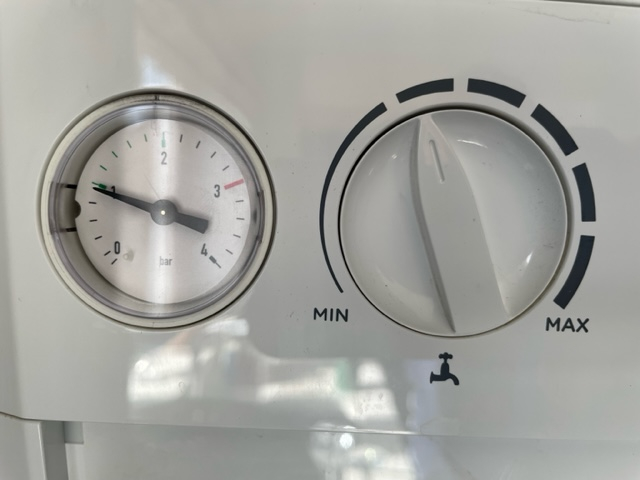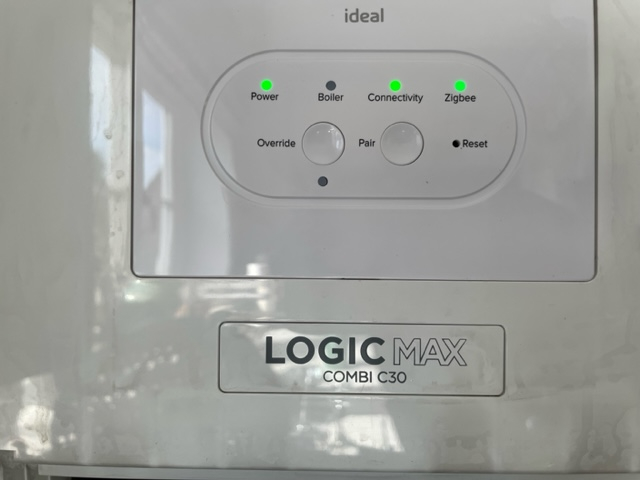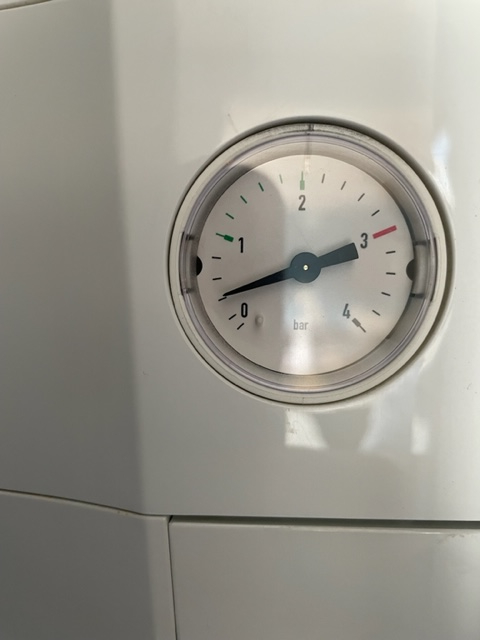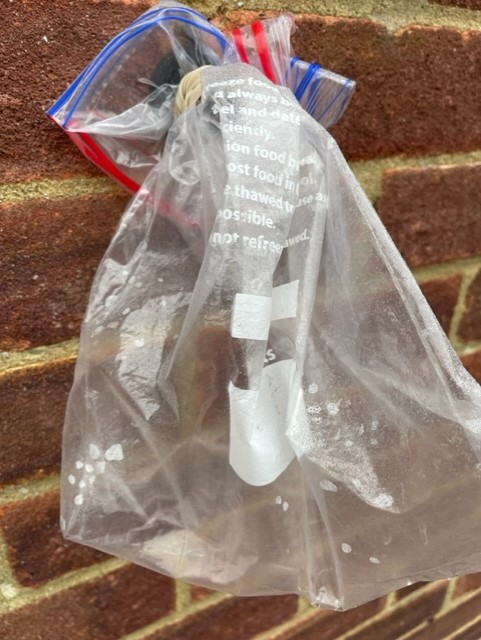We’d like to remind Forumites to please avoid political debate on the Forum.
This is to keep it a safe and useful space for MoneySaving discussions. Threads that are – or become – political in nature may be removed in line with the Forum’s rules. Thank you for your understanding.
📨 Have you signed up to the Forum's new Email Digest yet? Get a selection of trending threads sent straight to your inbox daily, weekly or monthly!
Boiler losing pressure, need help finding the cause (leak?)
Comments
-
Bullit_2600 said:Just responding to some previous comments, the reason we were topping up the pressure to 2 bar was on advice from the plumber to give us a few days where we didnt have to top it up and we've just kept doing it.And during winter we are doing this once / twice a week.
In the summer we didnt need to do it so the problem only occurs when the central heating is on.Unfortunately the pipes are boxed in but I cannot see any signs of leaks under the boiler which the same plumber has also checked for leaks and did not find any.Doesnt mean that isnt the cause though maybe it was missed.As mentioned boiler is only 2 years old so I'd hope it wasnt a cracked heat exchanger (which was previously checked) and also all radiators are new. May mean there is a chance of error at installation?I have just completed the following actions today:1. Bleed radiators - DONE - all ok as had bled them last week so no air.2. Check they are all tight - DONE3. Tighten valves on radiators - DONE4. Place paper tissue round each rad pipe - DONE5. Tie clear bag around discharge pipe (comes straight out the wall by boiler) - DONE6. Top up boiler to 1.2 - DONE (was at 2 so I had to bleed a radiator to get it down to 1.2 (2.5l of water)7. Confirm what pressure gauge is after turning on(a) after 1 min = 1.5(b) after 30 mins = 1.9(c) after 60 mins = 1.9 with dial flickering to 2(d) 10 mins off = 1.5(e) 30 mins off = 1.4(f) 60 mins = 1.2I'll keep an eye on the pressure gauge and the tissue paper for any signs of leaks.
Really appreciate all the comments and helpUnlikely to be a cracked exchanger, since this would also leak with just DHW being used - the exchanger works full-on for this.But even if it were a cracked X, it would surely be manufacture warranted for waaay over two years?Your pressure readings above suggest a slightly under-compensated system (ie, not enough expansion volume), as the pressure has risen from the cold 1.2 to ~2bar when hot. Although 2 bar is usually not a cause for worry, the largish change in pressure isn't ideal. Doesn't the gauge have a green zone marked on it, to indicate the acceptable range? Ideally you'd want that needle to barely rise at all.Interesting that the installer added a second EV - they must have calculated that your system volume justified this. And yet it doesn't fully seem to cope.Looking at your pressure figures again, had you started the cold system at 2bar, does this mean it would normally hit around 3bar? If so, that is the 'trigger' point where the safety discharge valve is opened and excess water dumped - which would give you the pressure loss symptoms you have been experiencing. Ie, waaaay too high. This cause would, tho', be the best scenario as it's usually easily sorted, but the main thing that suggests it ain't this is that it's too bleedin' obvious; the plumber should have checked this ten times over!0 -
"Your pressure readings above suggest a slightly under-compensated system (ie, not enough expansion volume), as the pressure has risen from the cold 1.2 to ~2bar when hot."
Well I'm not an expert but this temperature range, from my experience, seems normal.
The OP looks to be doing all of the right things - and providing great feedback.1 -
JohnB47 said:"Your pressure readings above suggest a slightly under-compensated system (ie, not enough expansion volume), as the pressure has risen from the cold 1.2 to ~2bar when hot."
Well I'm not an expert but this temperature range, from my experience, seems normal.
The OP looks to be doing all of the right things - and providing great feedback.I'm not an expert either, John.Some variation - an increase when hot - is certainly perfectly normal, and many/most boiler analogue gauges will have a 'green zone' shown on the dial to cover this. No idea which model Bullit has, but I would personally find that level of rise less than ideal, especially if a second EV were added. Having said that, if the 2 bar is within the 'green zone', and there are no other issues, I'd agree it's perfectly fine and ok to live with.I hope it's that sort of pressure issue for Bullit and not a leak, because the latter would appear to have to be in a hidden area and could be a pita to find and sort. But surely the plumber would have discounted this by now.(How do I know the plumber is called Su... )0 -
The boiler is made by Ideal Logic and is Combi C30. We havent had the heating on today and the pressure is sitting around 1 bar now.
I'll keep an eye on it over the next few days.
In case it matters if we run hot water it goes up by .2 bar.
The plumber could not identify why it was losing pressure (cant say what he tried) hence he suggested adding the 2nd EV in case the one in the boiler couldn't cope.
 2
2 -
It’ll be the expansion tank - it’s a known issue on the logic models. Phone up logic, see if yours is still under warranty.
happened to mine in Dec 21 - logic fixed it in 2 weeks2006 LBM £28,000+ in debt.
2021 mortgage and debt free, working part time and living the dream0 -
Perfectly ok for a small increase/change in pressure when running DHW - the water within the boiler is being heated, and the pump runs - both will affect this to some small degree.Bullit_2600 said:The boiler is made by Ideal Logic and is Combi C30. We havent had the heating on today and the pressure is sitting around 1 bar now.
I'll keep an eye on it over the next few days.
In case it matters if we run hot water it goes up by .2 bar.
The plumber could not identify why it was losing pressure (cant say what he tried) hence he suggested adding the 2nd EV in case the one in the boiler couldn't cope.

The large fluctuations will be seen as the large volume of water in the rads are heated, and the significant water expansion will need accommodating - that's what the EV is for.
Your gauge has a green '1' & '2', so it's clearly happy with that range. It's at around '3' that the safety valve opens - see how it's in red? I personally wouldn't be happy with anything over 2 bar - that needs investigating, and if the built-in EV ain't up to the job (lots of rads = lots of water), then a second one can be added, as in your case.
Your previous 'cold' pressure was 1.2, and is now 1? Not enough of an indication of water loss, as the two 'colds' could have been different.
Checked yet wee plastic bag yet? That's the biggest clue.0 -
Which one? The originally fitted internal one or the additional one fitted by the plumber later?jonnydeppiwish! said:It’ll be the expansion tank - it’s a known issue on the logic models. Phone up logic, see if yours is still under warranty.
happened to mine in Dec 21 - logic fixed it in 2 weeks
Presumably both are still 'in circuit' so both would have to be faulty (and water would be spurting/dripping from the pressure release valve outlet) for that to be the cause.0 -
Hi all, wanted to wait and provide an update after 1 week following all the helpful advice on here (thank you all).
Friday 10th - I set the boiler pressure to 1.2
Mon 13th - boiler pressure was about 0.6 so my wife topped up back to 1 (exactly)
Friday 17th - boiler pressure is back down to 0.4
The bag I put on the tap outside from outlet at the rear of the boiler has no water in it.
The tissues on the radiators are all dry but 2 did have like a finger print darker patch on so I have put tissue around those 2 radiators again in case I had contaminated them.
Grateful for any tips on moving forwards to try and find the issue, isolation etc?2 -


Thermostat and bag taken today Friday 17 March1 -
That's disappointing, B2600.
You are 100% certain that's the safety discharge pipe? Could we see it without the bag over it, please?
Good info - thanks. One extra useful bit of info would be how the pressure changed as the system heated up. Did it always go to around 2bar? Any higher than this?
Ok. The decisive way to tell whether the loss is from without or 'out of the boiler is to isolate it from the radiator circuit. So that means no CH for the test . You should be ok running the DHW side.
. You should be ok running the DHW side.
If no pressure loss after, say, a day, then observe the gauge as you reopen an isolating valve - any drop suggests a loss in the rad circuit.
Almost certainly it cannot be a leak from a rad valve, as we must be talking around a cupful each time - that would make quite a mess.
Other source from within the boiler is a cracked main exchanger, and this would drain out via the plastic condensate pipe. You could always place a container under this, but bear in mind it'll produce normal slugs when in use. So you'd be looking at liquid there when the boiler is cold and hasn't been on.
And one more possibility is that an EV is leaking air into the water side. The air could be pumped around until it's expelled by the auto air vent inside the boiler (must surely have one). The system water is then filling up the failed EV, causing the pressure loss - there is no actual 'leak'. In this case, it'll stop happening once the EV is empty of air, and the pressure increases will likely be greater. A generally unlikely cause, tho'.0
Confirm your email address to Create Threads and Reply

Categories
- All Categories
- 352.9K Banking & Borrowing
- 253.9K Reduce Debt & Boost Income
- 454.7K Spending & Discounts
- 246K Work, Benefits & Business
- 602.1K Mortgages, Homes & Bills
- 177.8K Life & Family
- 259.9K Travel & Transport
- 1.5M Hobbies & Leisure
- 16K Discuss & Feedback
- 37.7K Read-Only Boards



